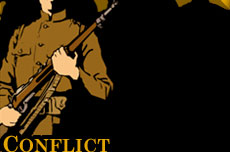On July 15, 1913, Copper Country WFM Locals sent letters to mine management asking for a settling of grievances and recognition of the WFM as the official representative of mineworkers. Mine managers ignored the letters. On July 23, 1913, tensions erupted as thousands of underground mineworkers went out on strike. Governor Ferris called in the Michigan National Guard to protect “life and property,” while strikers held huge rallies and parades, which sometimes turned hostile with Copper Country law enforcement. Several shooting incidents resulted in the deaths of both strikers and others who chose to return to work. The Copper Country was in the midst of a great upheaval as the WFM and its “rank-and-file” members attempted to force mining companies to the bargaining table to discuss worker grievances. |


